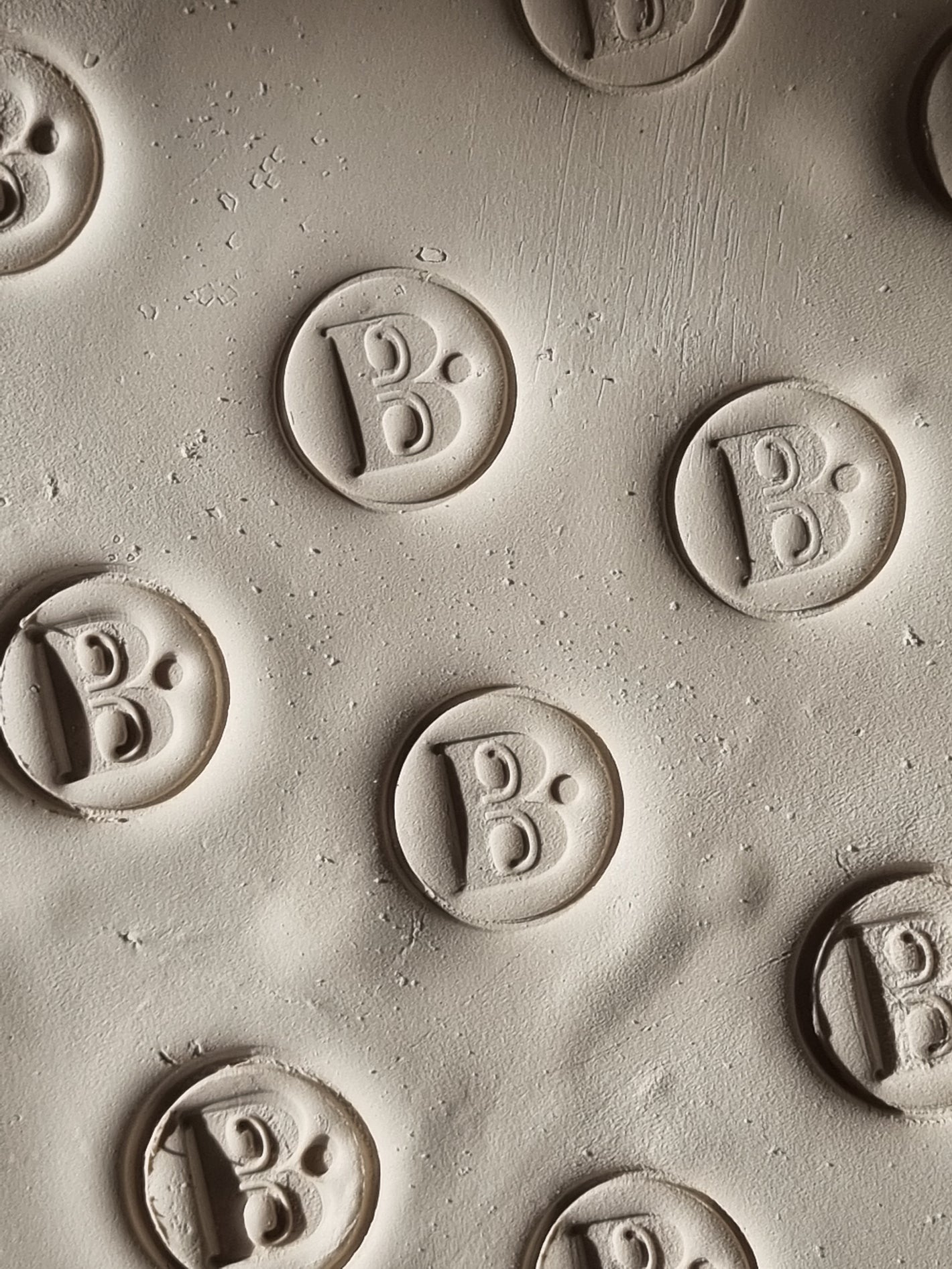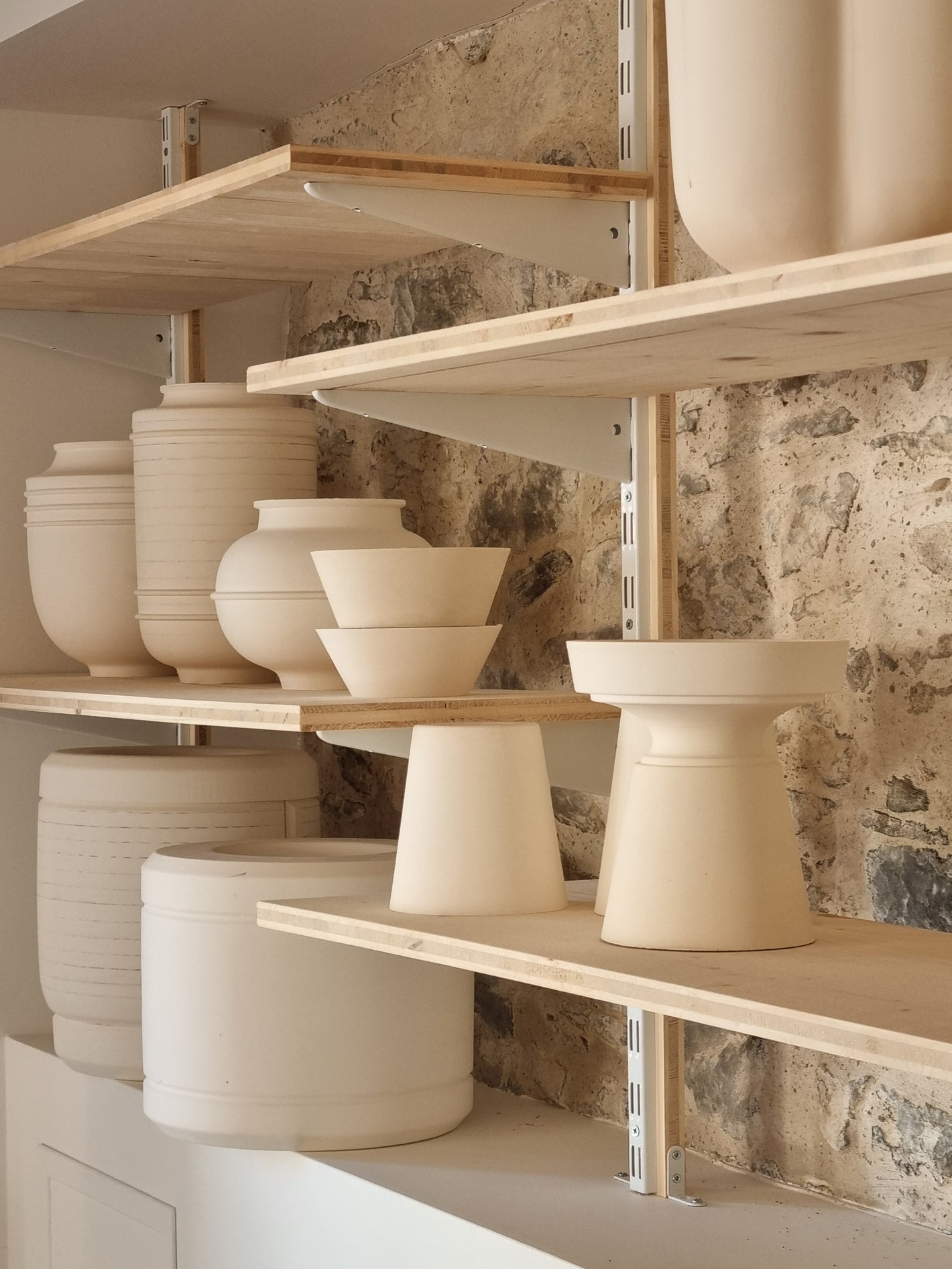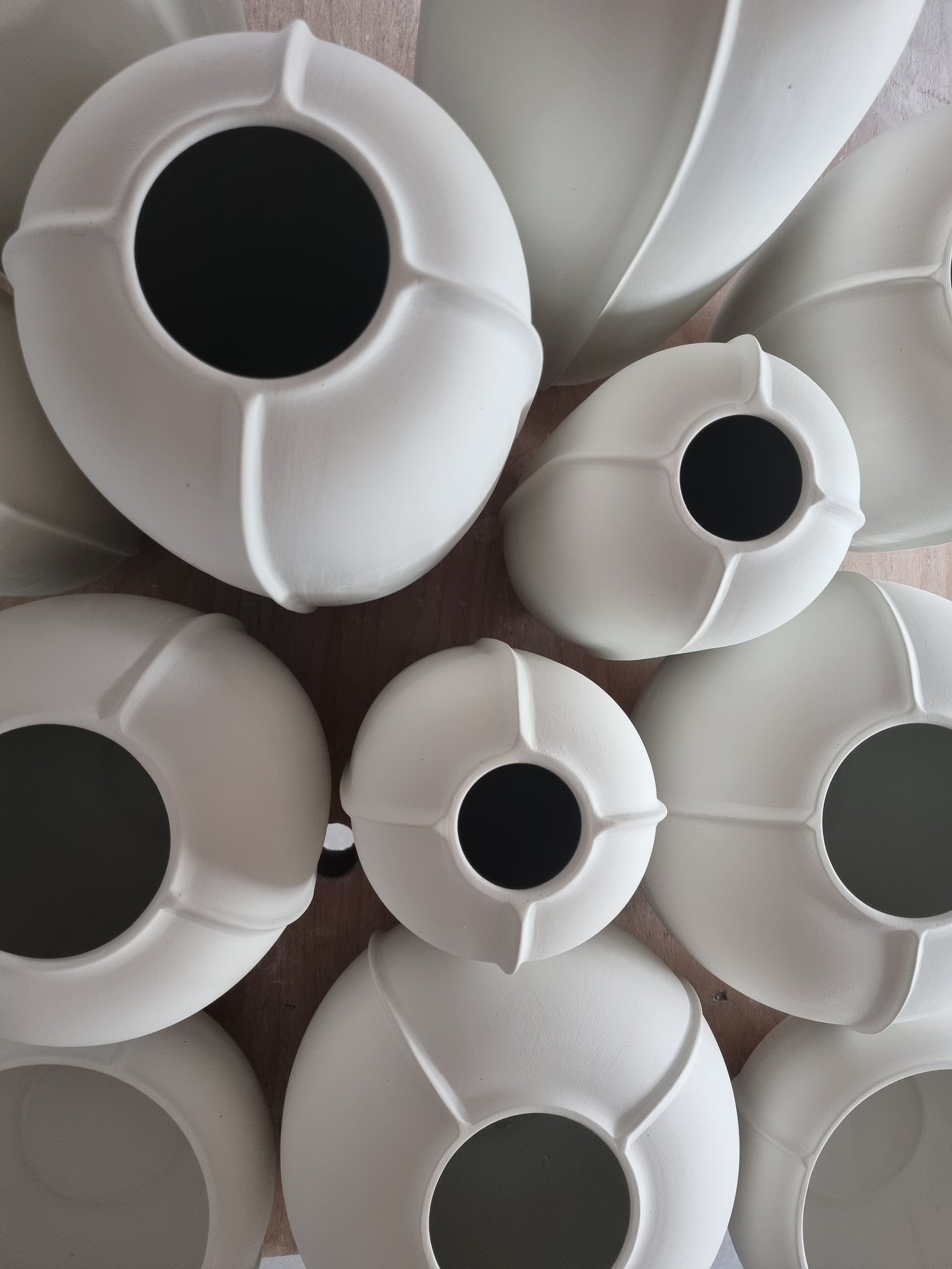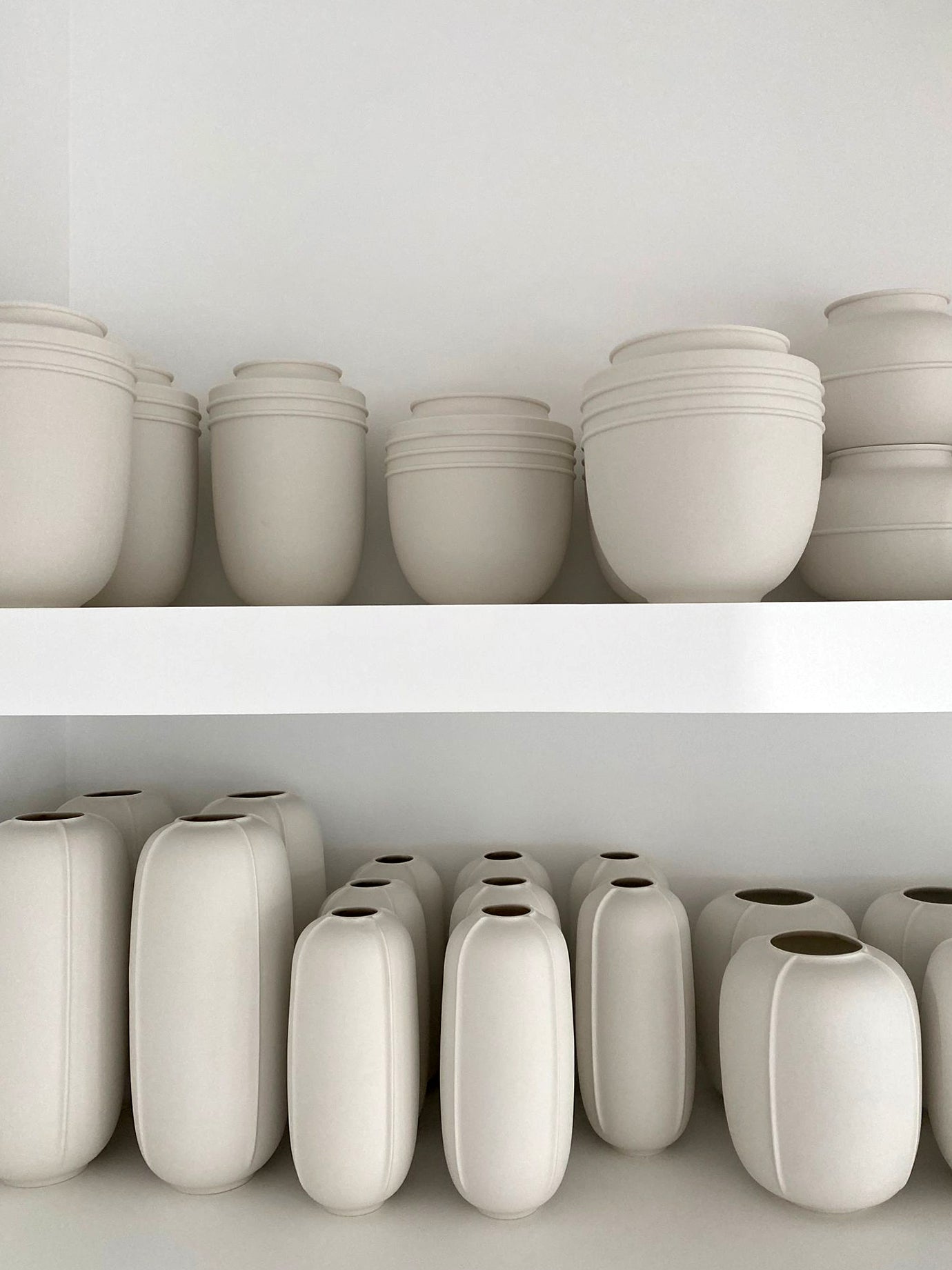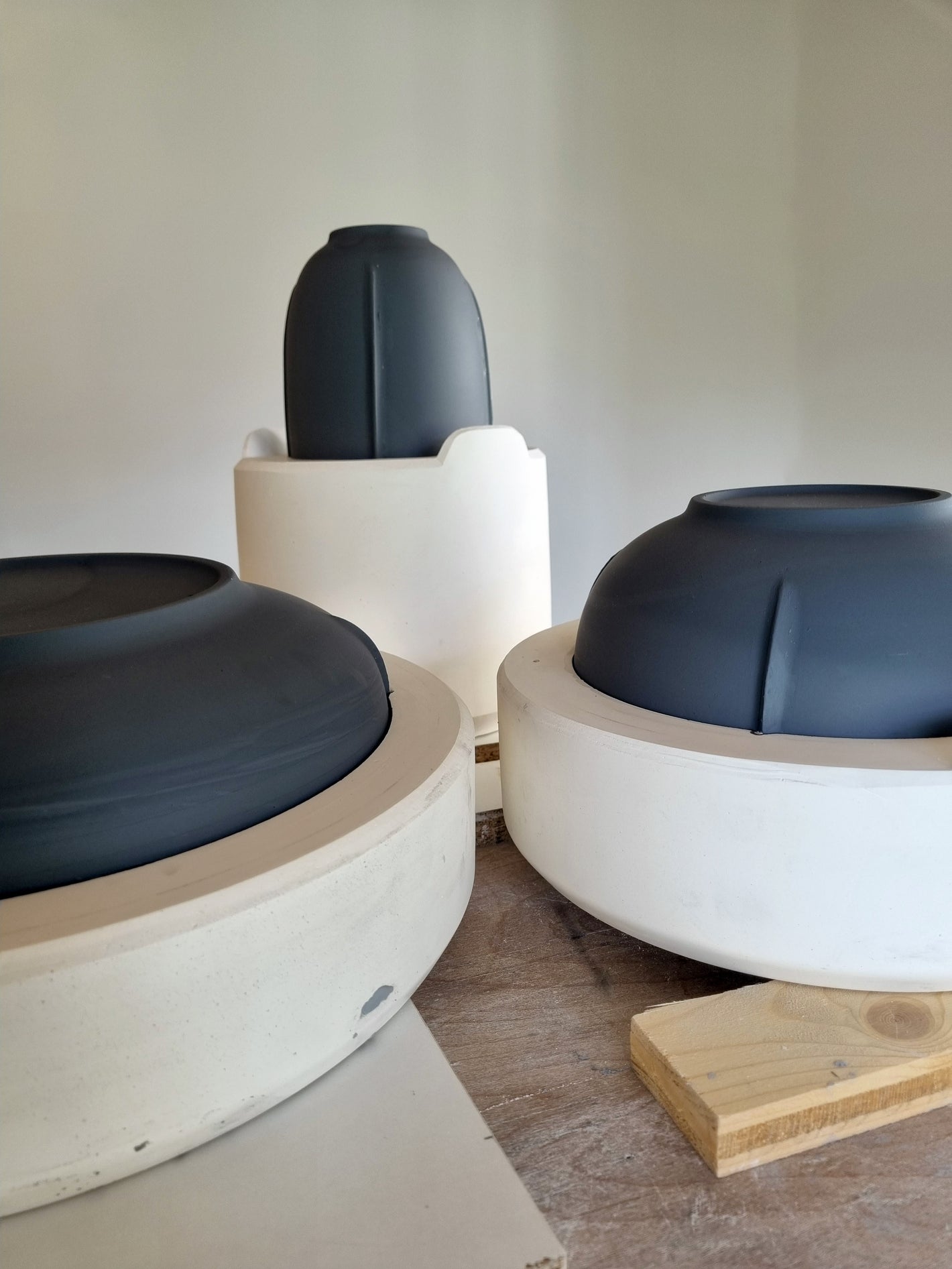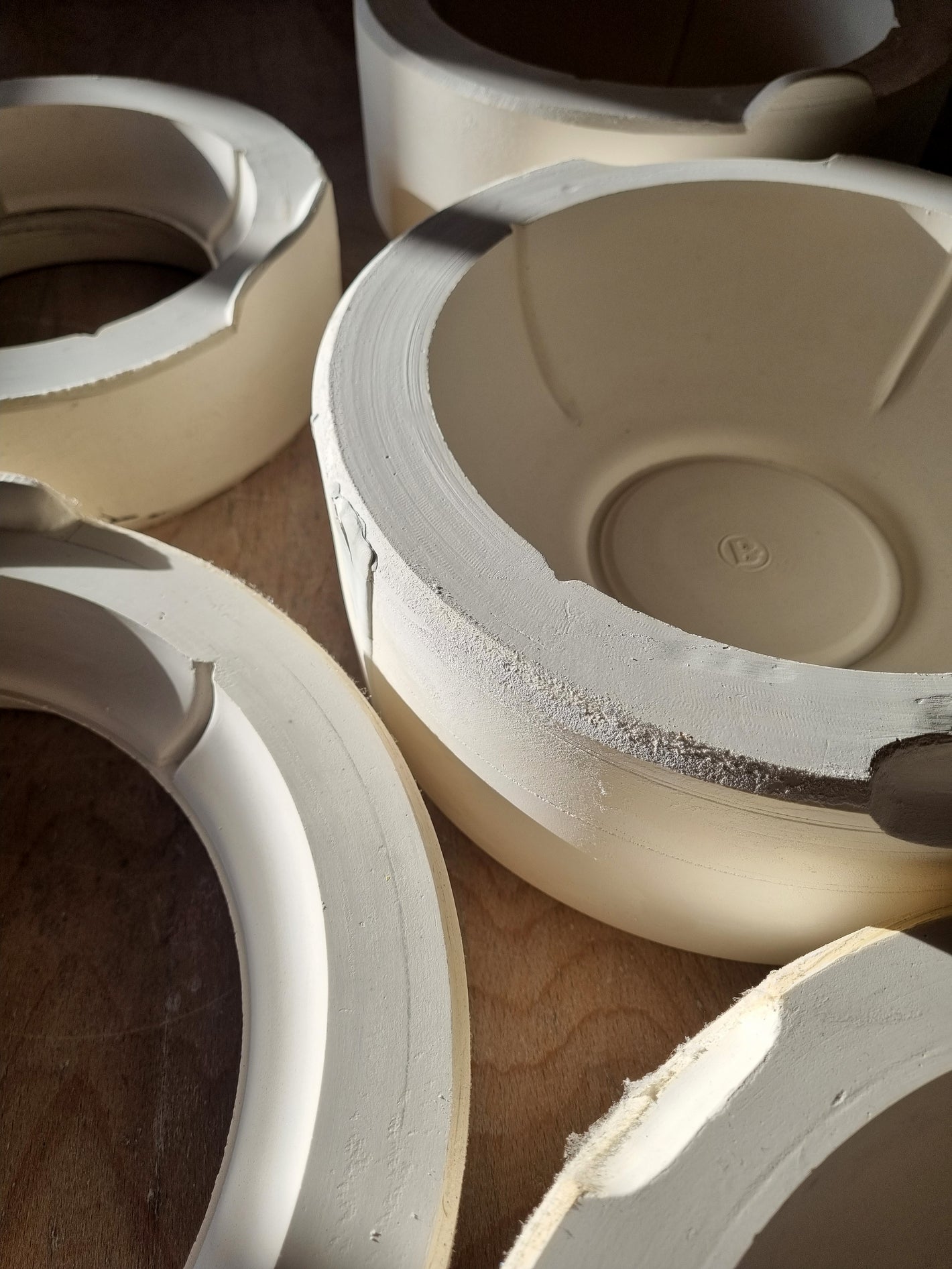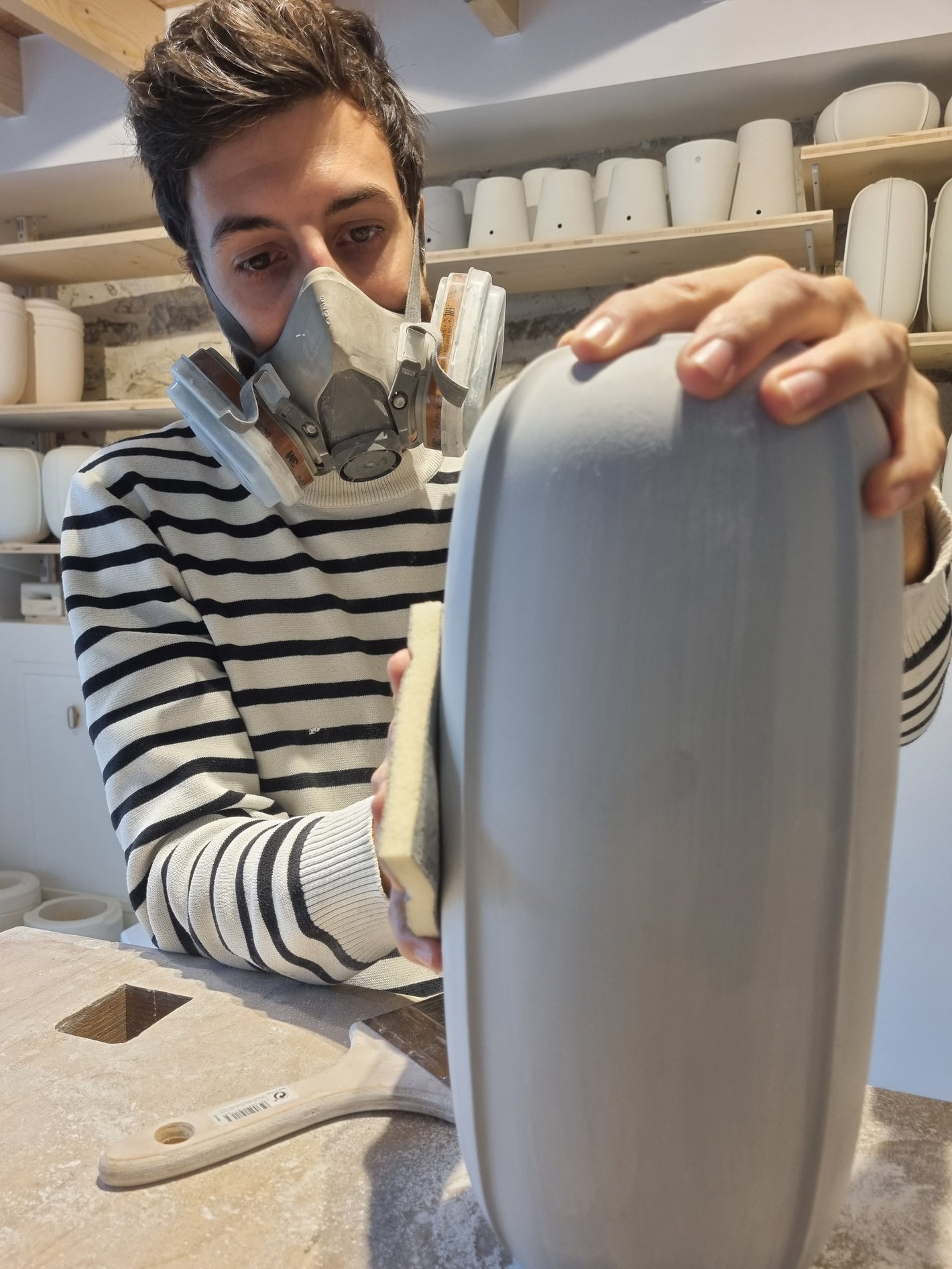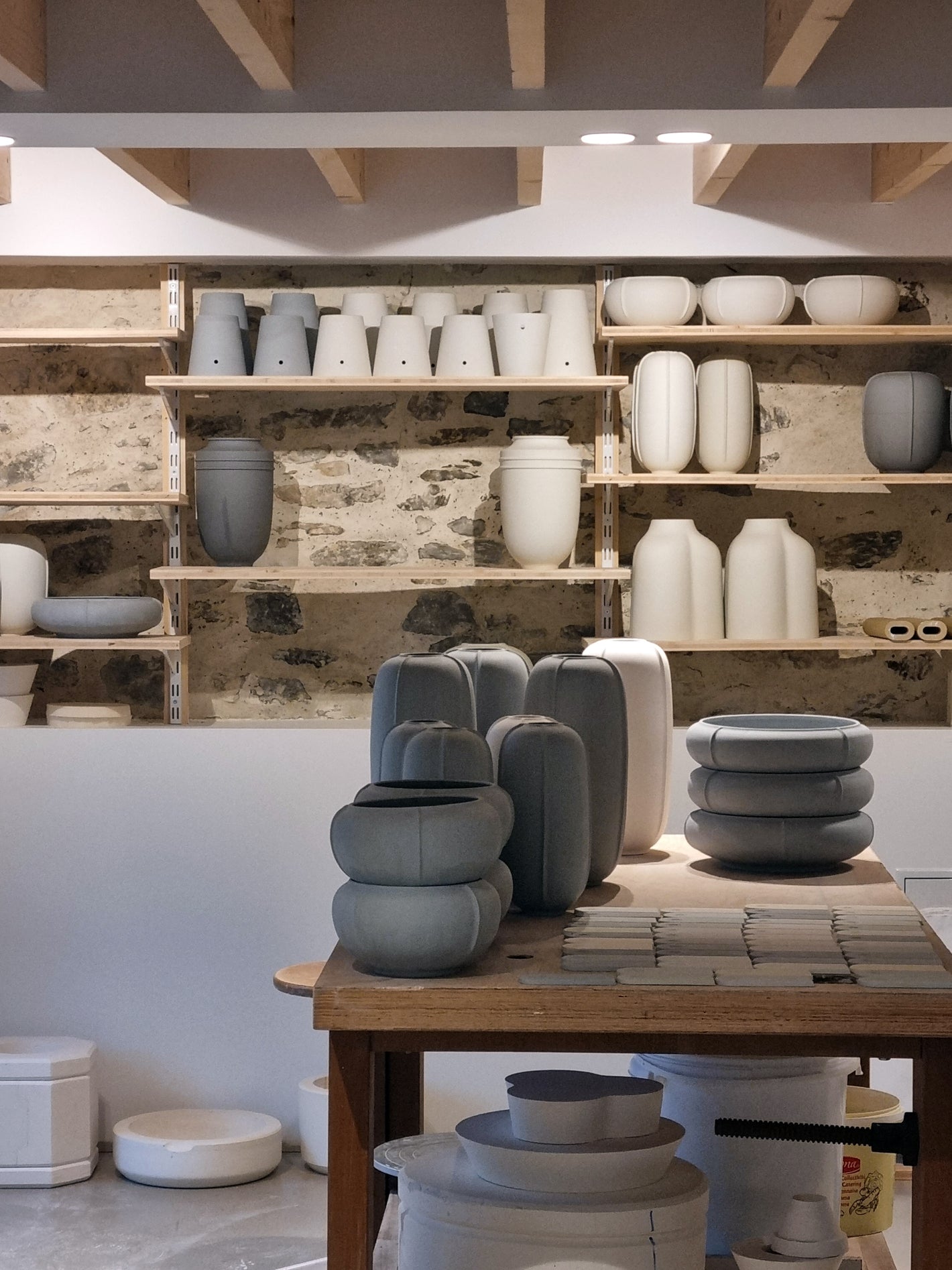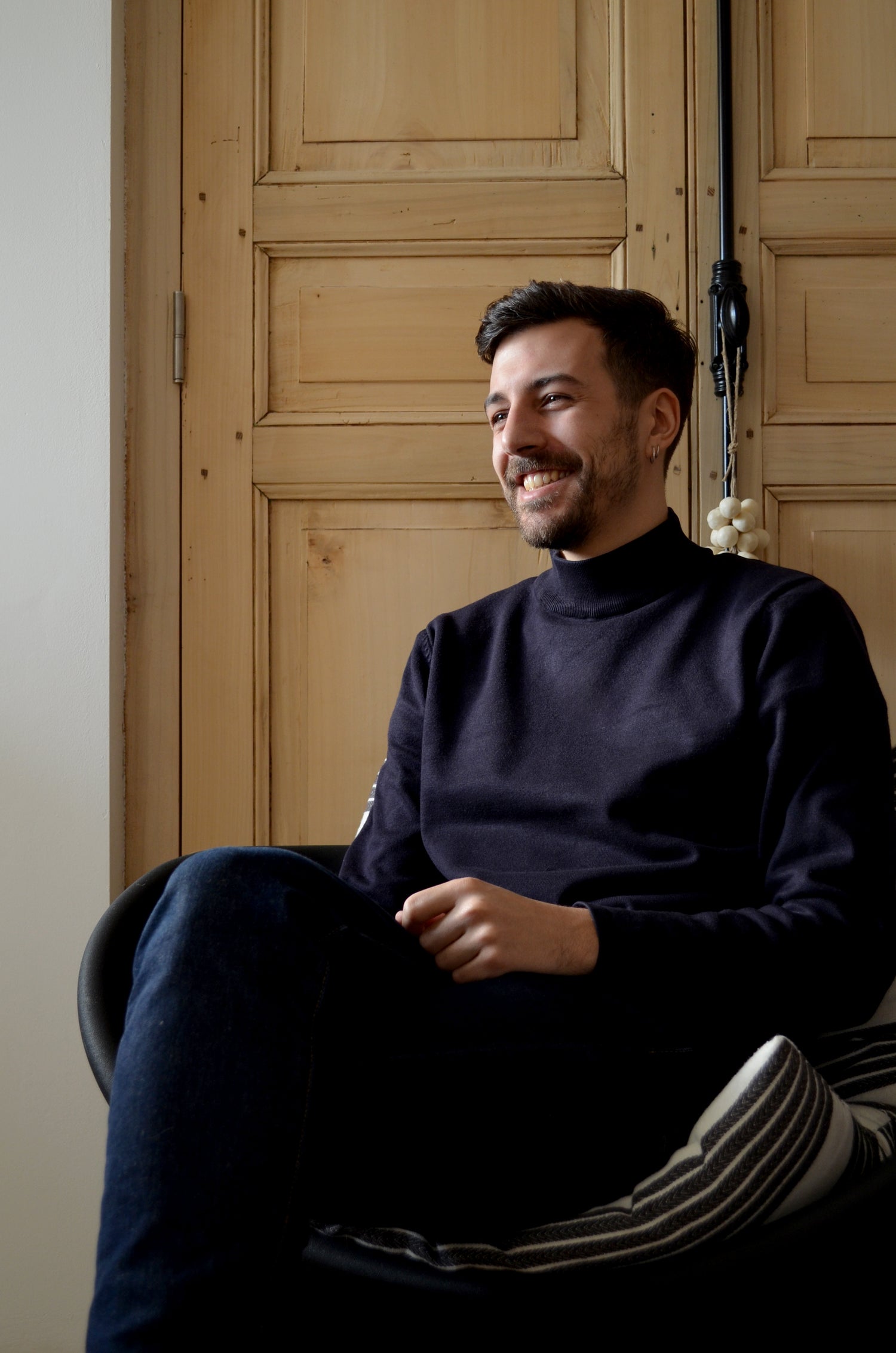
Craftsman and designer
Quentin Colas
A trained designer, I have always been passionate about crafts and artistic professions. It was while discovering the expertise of Maison JL Coquet and Jaune de Chrome that I developed a particular interest in porcelain. Curious and fascinated, I joined the workshops of the factory for two years to learn the craft of porcelain craftsman. Divided between theory and practice, I experimented with different shaping techniques, repeating a whole host of specific and precise gestures necessary for the execution of porcelain pieces.
As part of the house's creative team, projects followed one after the other, each revealing a little more of the secrets of this unique material. I discovered infinite creative possibilities, porcelain gradually becoming my raison d'être and my hands my best tool. I emerged from this experience with the idea of becoming a craftsman sooner or later.
After several years creating and designing collections for French manufacturers, creating my own workshop became obvious.
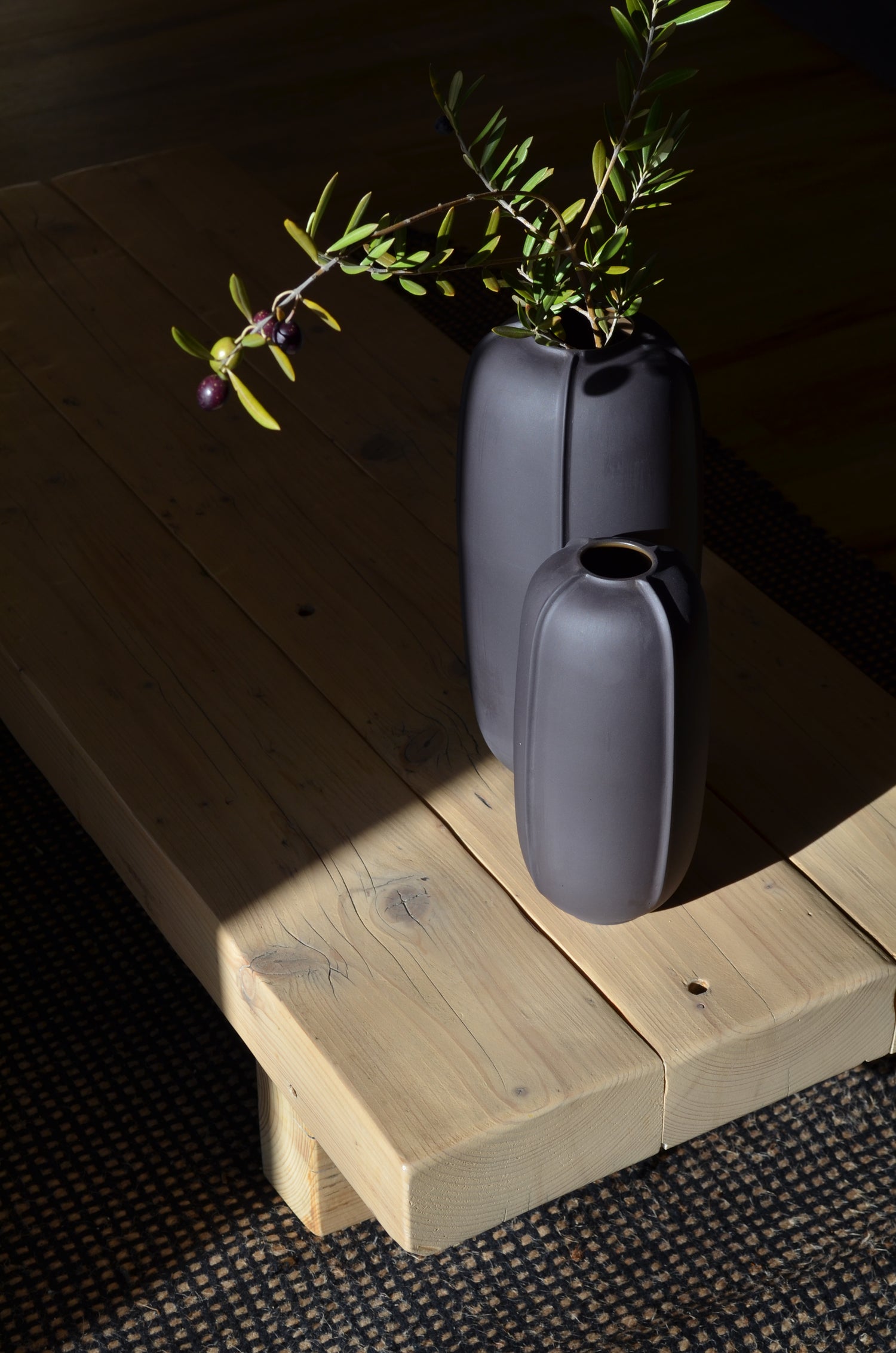
The universe of Basaltik
Tradition & modernity
Basaltik - a name inspired by basalt, the mineral born from the molten depths of the Earth. Its intense black color reflects the fusion of mineral power and fire, echoing the contrasting purity of white porcelain, made from kaolin and shaped at extreme temperatures.
The heritage of traditional ceramics is part of the identity of the Basaltik collections. I play with codes and subvert them to create contemporary objects that exude emotion and a story. Tradition, elegance, harmony of forms, and contrasting finishes—this is what could define the aesthetic of Basaltik.
By combining my skills as a designer with my expertise as a porcelain craftsman, I create, from sketch to completion, objects that inhabit our homes. Shaped by modeling, molding, and casting, the Basaltik collections are intended for everyday use and are entirely handmade in my workshop in Maine-et-Loire.
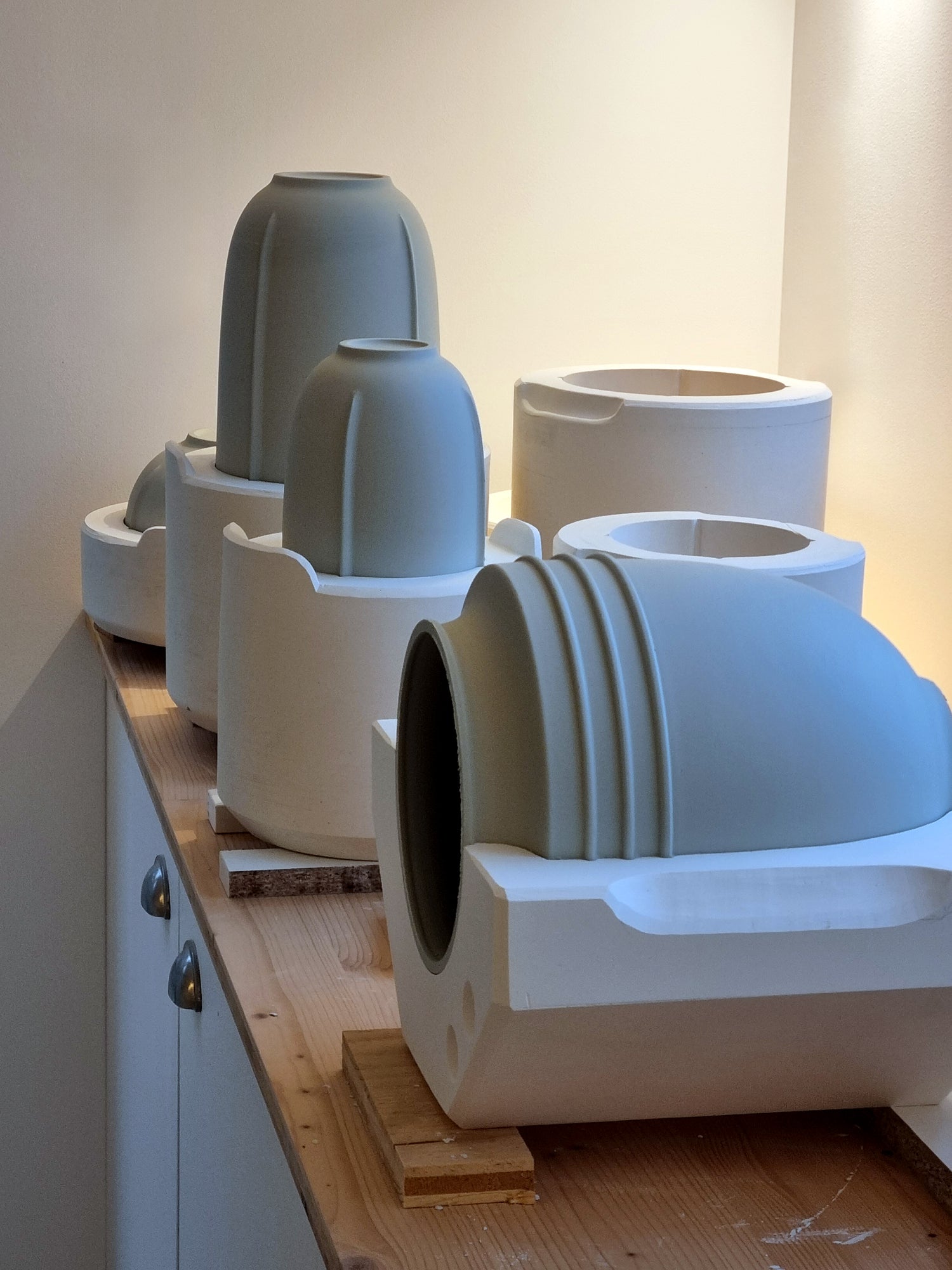
Porcelain manufacturing
Water, earth, fire

